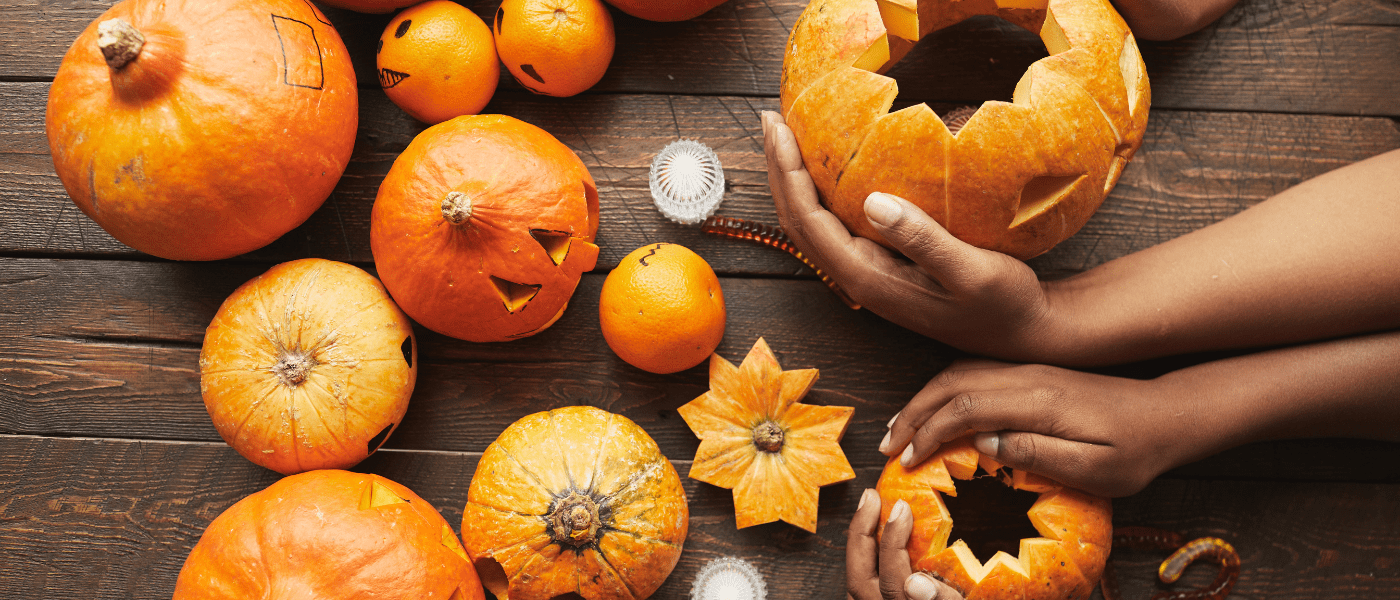Your cart
Shipping, taxes and discount codes calculated at checkout
No products in the cart.
Shipping, taxes and discount codes calculated at checkout

Autumn brings us the changing colours of the leaves, shorter days, pumpkin spice lattes, chillier temperatures and the celebration of Samhain
The Samhain period represents the turning point in the calendar where we leave behind the season of light and re-enter the darker period of the year. Its origins trace back to the Celts, who believed that on the day before their new year on November 1st, the boundaries between the living and the dead would blur, allowing the dead to return to earth. Bonfires were lit, gifts and food were exchanged, and general merriment was had.
Although these beliefs are long gone, we still carry on many Celtic traditions today – especially in our Samhain foods and Halloween treats.
Possibly the most iconic Samhain dish, Barmbrack is an autumnal sweet bread that is hugely popular in Ireland during the colder months. Bairín, meaning loaf, and aran, meaning bread, refers to a traditional Irish bread made using dried fruit soaked in tea. While this dish can be enjoyed any time of year, it is during Samhain that seasonal ingredients are incorporated to add symbolic and fortune-telling significance for the upcoming year. Items with different fortune-telling significance were baked into the bread. Finding a ring in your slice meant marriage was likely while receiving cloth or a stick meant poverty or an unhappy marriage. We may not have sticks in our bakes here at Fallon & Byrne, but our barmbracks are made fresh each morning for our food hall.
Another food associated with Samhain is the humble potato. A long-standing staple food in every Irish household, but did you know that it once was believed to have fortune-telling powers? Colcannon, meaning “white-headed cabbage” consists of mashed potatoes and cabbage and creamy butter. Similar to Barmbrack, colcannon often contained little fortune-telling trinkets. Folklore also states that young girls would fill their socks with spoons of colcannon and hang them outside their front door. The first man to walk through the door would then be their future husband. Although we don’t encourage filling your socks with spuds, we absolutely recommend you try this hearty dish during the Halloween season.
An apple a day keeps the doctor away, right? Well back in Celtic times, an apple a day kept the dead away! It was once a Samhain tradition to bury apples under the ground as a snack for the souls that were waiting to be reborn. Fast forward a couple hundred years and apples are still a
firm staple in our Samhain traditions. Nothing says Halloween nostalgia like biting at rock-hard granny smiths that are suspended by string! This tradition was practiced again in Celtic times, where apples were hung from trees to encourage the sun deity to return the following year. In recent years, chocolate and caramel apples have become popular treats for trick-or-treaters and are super easy and cheap to make at home with the little ones!
You may be surprised to hear that pumpkins weren’t always a part of Samhain traditions. People originally carved faces into turnips and other vegetables to ward off evil spirits. Centuries later, immigrants who travelled to America found that pumpkins were easier to carve, and thus began the reign of the Halloween pumpkin. Between pumpkin pies, pumpkin spice lattes and pumpkin soups, we can’t get enough of it!
Created by the Irish and now celebrated all over the world as Halloween, Samhain is a time to get cosy, embrace the spookier side of life and enjoy traditional Autumn foods.
Oíche Shamhna!